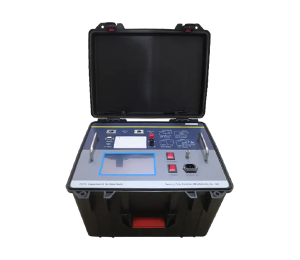 English
English



-
 Afrikaans
Afrikaans -
 Albanian
Albanian -
 Amharic
Amharic -
 Arabic
Arabic -
 Armenian
Armenian -
 Azerbaijani
Azerbaijani -
 Basque
Basque -
 Belarusian
Belarusian -
 Bengali
Bengali -
 Bosnian
Bosnian -
 Bulgarian
Bulgarian -
 Catalan
Catalan -
 Cebuano
Cebuano -
 China
China -
 China (Taiwan)
China (Taiwan) -
 Corsican
Corsican -
 Croatian
Croatian -
 Czech
Czech -
 Danish
Danish -
 Dutch
Dutch -
 English
English -
 Esperanto
Esperanto -
 Estonian
Estonian -
 Finnish
Finnish -
 French
French -
 Frisian
Frisian -
 Galician
Galician -
 Georgian
Georgian -
 German
German -
 Greek
Greek -
 Gujarati
Gujarati -
 Haitian Creole
Haitian Creole -
 hausa
hausa -
 hawaiian
hawaiian -
 Hebrew
Hebrew -
 Hindi
Hindi -
 Miao
Miao -
 Hungarian
Hungarian -
 Icelandic
Icelandic -
 igbo
igbo -
 Indonesian
Indonesian -
 irish
irish -
 Italian
Italian -
 Japanese
Japanese -
 Javanese
Javanese -
 Kannada
Kannada -
 kazakh
kazakh -
 Khmer
Khmer -
 Rwandese
Rwandese -
 Korean
Korean -
 Kurdish
Kurdish -
 Kyrgyz
Kyrgyz -
 Lao
Lao -
 Latin
Latin -
 Latvian
Latvian -
 Lithuanian
Lithuanian -
 Luxembourgish
Luxembourgish -
 Macedonian
Macedonian -
 Malgashi
Malgashi -
 Malay
Malay -
 Malayalam
Malayalam -
 Maltese
Maltese -
 Maori
Maori -
 Marathi
Marathi -
 Mongolian
Mongolian -
 Myanmar
Myanmar -
 Nepali
Nepali -
 Norwegian
Norwegian -
 Norwegian
Norwegian -
 Occitan
Occitan -
 Pashto
Pashto -
 Persian
Persian -
 Polish
Polish -
 Portuguese
Portuguese -
 Punjabi
Punjabi -
 Romanian
Romanian -
 Russian
Russian -
 Samoan
Samoan -
 Scottish Gaelic
Scottish Gaelic -
 Serbian
Serbian -
 Sesotho
Sesotho -
 Shona
Shona -
 Sindhi
Sindhi -
 Sinhala
Sinhala -
 Slovak
Slovak -
 Slovenian
Slovenian -
 Somali
Somali -
 Spanish
Spanish -
 Sundanese
Sundanese -
 Swahili
Swahili -
 Swedish
Swedish -
 Tagalog
Tagalog -
 Tajik
Tajik -
 Tamil
Tamil -
 Tatar
Tatar -
 Telugu
Telugu -
 Thai
Thai -
 Turkish
Turkish -
 Turkmen
Turkmen -
 Ukrainian
Ukrainian -
 Urdu
Urdu -
 Uighur
Uighur -
 Uzbek
Uzbek -
 Vietnamese
Vietnamese -
 Welsh
Welsh -
 Bantu
Bantu -
 Yiddish
Yiddish -
 Yoruba
Yoruba -
 Zulu
Zulu
Winding Resistance Evaluation Method for Power Transformer Performance Analysis
Winding Resistance Test of Power Transformers
The winding resistance test is a crucial diagnostic procedure employed to assess the condition and performance of power transformers. This test provides valuable insights into the electrical and thermal characteristics of transformer windings, offering a means to identify potential issues such as loose connections, damaged windings, or other defects that could compromise the reliability and efficiency of the transformer.
Importance of Winding Resistance Testing
Power transformers play a vital role in electrical power systems, facilitating the transmission and distribution of electricity across vast distances. Over time, due to thermal cycles, mechanical stresses, and environmental conditions, the windings can experience degradation. The winding resistance test helps in
1. Identifying Faulty Connections Loose connections at junctions can lead to increased resistance, resulting in overheating and reduced efficiency. 2. Assessing Winding Condition The test helps detect changes in resistance that can indicate wear or damage, such as insulation breakdown or degradation of conductor materials.
3. Ensuring Adequate Performance By monitoring resistance values over time, operators can ensure that the transformer is operating within its designed specifications, enhancing overall system reliability.
Testing Procedure
The winding resistance test typically involves the following steps
1. Preparation Before commencing the test, ensure that the transformer is de-energized, isolated, and properly grounded. Safety precautions should always be prioritized.
2. Equipment Setup A micro-ohmmeter or a winding resistance bridge is used to measure the resistance of the windings. These devices offer high accuracy and are designed to provide reliable measurements even for low resistance values typical of transformer windings.
3. Measurement Connect the testing leads to the transformer terminals—either primary, secondary, or both, depending on the test objectives. Start the measurement and record the resistance values for each winding, noting the temperature of the windings at the time of testing.
winding resistance test of power transformer

4. Temperature Correction Since resistance is temperature-dependent, it is essential to apply a temperature correction factor to the measured values, allowing for accurate comparisons to the manufacturer's specified values — typically provided at a standard temperature of 20°C.
5. Data Analysis Once the measurements are taken, they must be analyzed against baseline values, historic data, or manufacturer specifications. Significant deviations in resistance can indicate various issues needing further investigation.
Interpretation of Results
Interpreting the results of a winding resistance test involves understanding what changes in resistance may imply
- Increased Resistance A noticeable increase compared to previous measurements may indicate a developing fault, such as oxidation of contacts, degradation of the winding insulation, or other connection issues. - Decreased Resistance A sudden drop could suggest the formation of undesirable electrical paths, possibly due to insulation failure or shorting between turns.
- Asymmetry in Measurements Significant differences between the primary and secondary winding resistances may also indicate issues, such as unbalanced loading or design faults.
Routine Testing and Maintenance
Regular winding resistance tests should be part of a comprehensive maintenance schedule for power transformers. These tests can be performed during routine inspections or when abnormalities are suspected. Additionally, recording and tracking resistance values over time can help establish trends that signal emerging problems.
Conclusion
In conclusion, the winding resistance test is an essential tool for ensuring the operational reliability and efficiency of power transformers. By identifying potential faults early, operators can prevent costly failures and extend the lifespan of these critical components in the power distribution system. As the electrical industry continues to evolve, maintaining a robust testing and diagnostic regimen will be paramount to the seamless functioning of our electrical infrastructure.
-
Testing Equipment Industry Sees Major Advancements in 2025: Smart & Precision Technologies Lead the WayNewsJun.06,2025
-
Applications of Direct Current Generators in Renewable Energy SystemsNewsJun.05,2025
-
Hipot Tester Calibration and Accuracy GuidelinesNewsJun.05,2025
-
Digital Circuit Breaker Analyzer Features and BenefitsNewsJun.05,2025
-
Benefits of Real-Time Power Quality Monitoring Devices for Industrial EfficiencyNewsJun.05,2025
-
Earth Fault Loop Testing in High-Rise Building Electrical SystemsNewsJun.05,2025



